Rocket artillery from the Second World War
One of the symbols of the Second World War will always be the Soviet "Katyusha". During the war years, rocket artillery was able to perfectly complement cannon artillery and after the end of the conflict all modern artillery developed under the influence and experience of combat operations on the fronts of World War II. In this regard, "Katyusha" gave rise to a special type of artillery - mobile multiple launch rocket systems (MLRS), which can move directly with the troops, accompanying their actions with fire and quickly changing firing positions.
UK Rocket Artillery
One of the first examples of pre-war rocket artillery weapons is the British "two-inch rocket," which was launched in 1934. At the same time, the British considered such developments not as a weapon of the battlefield, but as a means of strengthening the capabilities of air defense. Thanks to the introduction of missiles, they wanted to reduce costs and time for the construction of the required number of artillery anti-aircraft installations. As the engine, the simplest device was used, in which cordite was used - one of the types of nitroglycerin smokeless powder. To cock the rocket fuse used a wind scapula located on her nose. The self-liquidator was triggered 5 seconds after the start. According to the calculations of the designers, this time should have been enough for the rocket to gain a height of 1370 meters. At the same time, a light wire should loop behind the rocket, which, according to the developers, should be entangled in the screws of enemy aircraft, leading to engine failure. Such missiles were to be used against low-flying targets. PU missiles appeared on some battle and merchant ships of English fleetSuch launchers and rockets were released in a very small circulation.
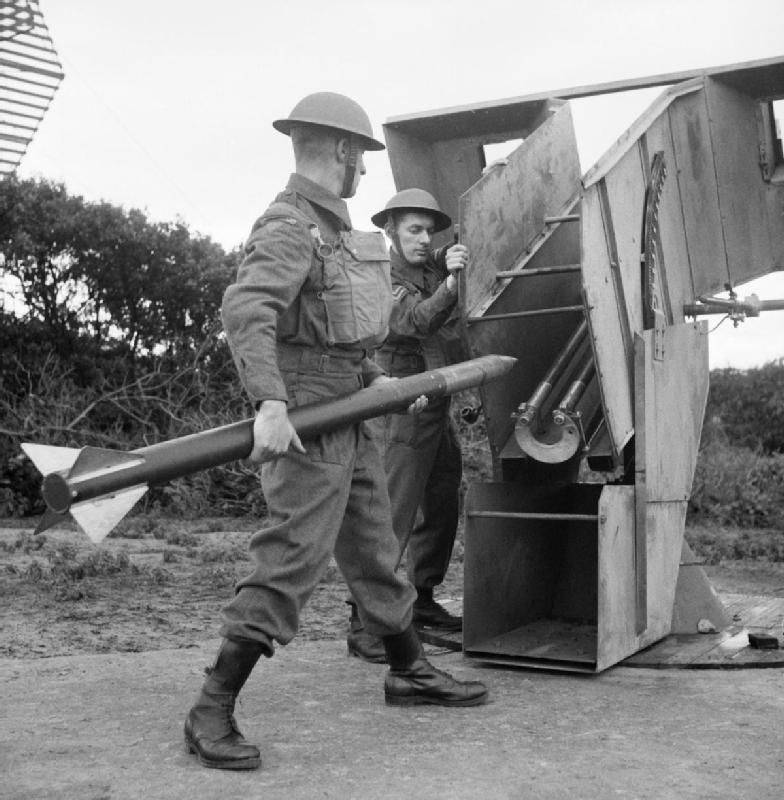
In 1937, the UK created a more powerful model - a three-inch anti-aircraft missile. The warhead of this missile had the same mass as the 94-mm anti-aircraft artillery projectile. This rocket was also distinguished by a simple tubular design with a stabilizer and an engine with a cordite charge, which was already used on two-inch rockets. The first battery, armed with installations with this rocket, was installed near Cardiff in South Wales and received the designation Z. It used monorail launchers of a very simple design. In this case, the launch of missiles was unreliable, and sometimes dangerous, and the accuracy left much to be desired. During the war years, the problem of accuracy was solved by increasing the guides. So, in the 1944 year, the British got a launcher that could launch four volleys on 20 missiles, it was stationary and installed at coastal defense facilities.
One unintended result of the development of the British program to develop air defense missiles was the adoption of a three-inch (76,2 mm) ground-based missile into service with the Royal Air Force. Launched from short rails, it proved to be quite effective as an air-to-surface missile, and at the end of the war it was also used on ships to fight German submarines.
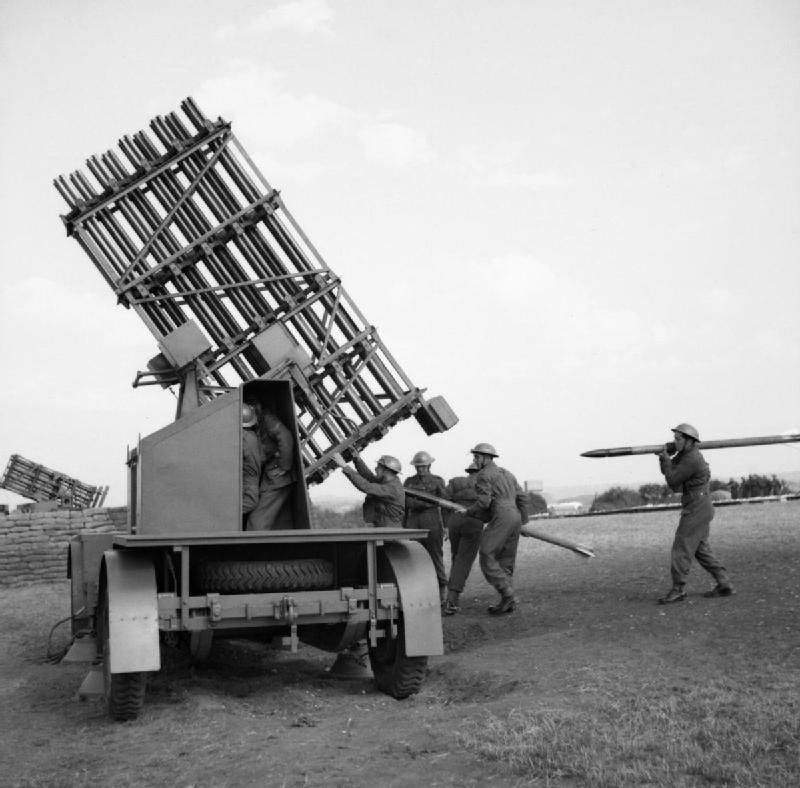
Although initially the development of missile weapons in England was focused on the needs of air defense, some attention was paid to the creation of rocket artillery. For example, the project for a five-inch (127-mm) Mattress rocket appeared, which was rejected by the ground forces, but the fleet liked it. The Navy used launchers with such missiles to suppress enemy fire in the landing zones, which is why the missile was called the "Mattress". Initially, such missiles were notable for their small accuracy and short range. But in the course of their further refinement, connecting the three-inch engine aviation missiles with a 13-kilogram marine warhead and, giving the missile rotation at the time of launch, the firing range was increased to 7500 meters, the accuracy also improved. After refinement, they were called "Land Mattress", creating for them 12-, 30- and 32-barrel launchers. Despite the initial successes of this weapon, until the end of the war against Germany and its allies in Europe, its use was not widespread. And in the jungle of Southeast Asia, the use of such installations was limited by their large dimensions and mass.
In the 1944 year, the British began to use LILO launchers to combat powerful bunkers and fortifications on the islands of the Pacific Ocean and on the territory of Southeast Asia, in an area where heavy artillery could not reach. It was a rocket with the simplest launcher, which allowed firing at the target from a short distance. High-explosive warheads with 18 or 35 kg of TNT were used on the missiles. Due to its simplicity and low weight, it was carried by two people: one carrying a rocket in the backpack, the second PU. Upon arrival at the launch site, the rocket was placed in a pipe, which with the help of its hind legs was exposed to the required elevation angle and aimed. After launch, the missile of such a rocket could sink to the ground up to 3-meters, easily punching logs. The main problem was the accuracy of the weapon. In order to accurately hit one fortified enemy object at a distance of just 50 meters, it was necessary to have approximately 5 missiles. However, such a decision was easier than dragging heavy equipment through impassable mountains and jungles.
German Rocket Artillery
The most famous model of Wehrmacht jet weapons was the 150-mm jet mortar “Nebelwerfer” (literally “Tumanomet”). Initially, this rocket mortar was created for putting smoke screens on the battlefield or in case of chemical warfare, he could use chemical munitions. However, in 1941, these mortars were equipped with 150-mm missiles of two types tested before the fighting: high-explosive and smoke. A distinctive feature of these ammunition was the location of the combat charge in close proximity to the tail section. At the moment of detonation, engine fragments increased the damaging effect of their use. The standard launcher for the Wurfgranate 41 consisted of six tubes that were mounted on a light two-wheeled gun carriage 37-mm anti-tank gun Pak 35 / 36.
In the Soviet Union, this rocket mortar was nicknamed "Vanyusha", and in the Allied forces for the characteristic sound when fired - "Moaning Mimi". Served Nebelwerfer 41 mortar, which weighed 590 kg in an unloaded condition, the calculation of four people. In this case, the firing range was 6,9 km. A mortar could fire at a rate of one shot per second in 0,6, making three full volleys in 5 minutes (including reloading).
The relatively small high explosive effect of 150-mm rockets made the Germans create a similar but more powerful mortar. So the 210-mm Nebelwerfer 42 appeared, the launcher for it had a similar design, but it was already five-barreled. In 1942, a self-propelled launcher began to arrive under the designation Panzerwerfer 42. It used two rows of pipes - 5 each, they were mounted in one block and placed on the semi-tracked chassis. This installation turned out to be effective due to its mobility, and besides, it had chances to survive when firing back fire on it. The range of 210-mm missiles fired was about 7800 meters, with a full volley self-propelled launcher made in 8 seconds, about 1,5 minutes took her recharge.
In February, the 1943 was armed with an even more powerful, 300-mm, high-explosive reactive mine, designated 30 cm Wurfkorper Wurfgranate Spreng (30 cm WK.Spr.42). It was used to combat the enemy’s field fortifications and to defeat his personnel and equipment. A shell with a length of 1248 mm and a mass of 127 kg could cover about 4,5 kilometers. The firing of such missiles was carried out with the newly created six-barreled 30 launcher, see Nebelwerfer 42. In this case, the base was already take the carriage of the 50-mm anti-tank gun PaK 38. The Germans used the F320 150-mm Wurfkerper M missile, which was filled with an incendiary charge in the form of a heavy flammable liquid (for example, 50 kg of oil). With the explosion of such a projectile liquid fire scattered on 25 meters on the front and 15 meters in depth. In addition to the defeat of manpower and equipment of the enemy, the explosion of such incendiary ammunition had a strong demoralizing impression on the enemy.
Separately, it can be noted that most of the missiles came in Wehrmacht in specially designed boxes for manual carrying. Their feature was the possibility, if necessary, to become an improvised launcher. For this, the drawers were equipped with front support legs. German sappers often used improvised launchers to undermine the enemy’s defensive positions and dugouts.
USSR reactive artillery
Soviet Union artillery during the years of World War II was a formidable weapon and was distinguished by a wide variety of used missiles in caliber from 82 mm to 300 mm. During the Great Patriotic War, rockets were widely used in the ground forces, in aviation and in the navy. From July 1941 of the year to December of 1944, the Soviet industry was able to launch for the front more than 10 thousands of volley launchers and more than 12,5 millions of missiles of all calibers and types.
One of the first and smallest rockets in the Soviet Union was the RS-82 (M-8) 82-mm caliber. This missile appeared as a by-product of the program for the creation of aviation missile weapons. RS-82 aviation was not sufficiently interested, but the artillery units rated it much better. These rockets were small in size - only 600 mm long. At the same time, a small high-explosive fragmentation hotel could fly to the enemy, breaking 6,2 km. Launchers for such missiles were equipped with both aircraft and Tanksas well as freight vehicles. The base for the BM-8-24 combat vehicle (24 guides) was the T-40 and T-60 light tanks, from which the tower was dismantled. Such launchers were actively used in battles from 1941 to 1943 and were very well received by the troops because of better security and patency in comparison with the legendary Katyushas.
"Katyushas" were launchers for PC-132 (M-13) missiles of 132-mm caliber based on truck chassis. This PU became the most used in the battles of World War II. She passed her baptism of fire in July 1941, near Orsha. The ten-second volley of batteries from 7 cars made an indelible impression on the Germans. 132-mm ground attack missiles could cover 8,4 km. Their length was 1,41 meter, and the mass of explosive - 4,9 kg. At the same time, the accuracy of the missiles was low, but this shortcoming was leveled by the mass character of the volleys.
Already during the war, X-NUMX-mm M-300 and M-30 rockets were developed, which appeared as a response to the request of the Red Army about ammunition with a large amount of explosive. These missiles were distinguished by the presence of the same rocket engine as that of the 31-mm M-132, but the warhead was already equipped with 13 kg of TNT. Missiles M-28,9 appeared in July 30 of the year and were made by attaching a new M-1942 projectile in the form of an ellipsoid to the powder engine well mastered by the Soviet industry. Such 13-mm projectiles were launched from the Rama M-300 machines that contained the 30 projectile. The firing range of such missiles was limited to three kilometers.
In 1943, the new M-30 high-explosive projectile with 31 km firing range replaced the M-4,3, and in April 1944, the M-31UK (improved accuracy with the 4 km firing range) was adopted. Accuracy increased due to the rotation of rockets in flight. The accuracy of their fire, according to the experience of combat use, increased 2-3 times, and the density of fire of batteries increased as many times. These missiles were used on the MLRS BM-31 on the basis of Studebaker trucks received under the Lend-Lease program. In total, until the end of the war, 1800 BM-31-12 (12 guides) were built, of which about 100 installations were lost in combat.
United States Rocket Artillery
The US armed forces had rather weak ground forces at the time of the start of World War II. By 1 September 1939, in the US Army, served no more than 200 thousand people. At the same time, there was absolutely no missile armament in the armament and no developments were made in this direction (they began in the 1940 year). The first rocket that entered service with the American army was the M8 (114-mm). The rocket had a tail stabilizer and a contact nose fuse, which led to the detonation of 1,9 kg of explosives. The Americans used PUs with such missiles from airplanes, car chassis and tanks. From 1942 to 1945, 2,5 was launched into the millions of such unguided rockets.
Actively began to use them with 1943 year. At the same time, 114-mm M8 rockets proved to be effective weapons, although they were distinguished by mediocre accuracy. For example, when using only 5% of missiles launched from an aircraft from a distance of just 300 meters, they hit a fixed target. In fairness, it is worth noting that the rockets of all countries during the Second World War were of low accuracy, it was their Achilles heel. However, this weapon was used for fire on the squares, and not on single targets.
Typical PU for such missiles was the T27, which contained 24 missiles (3 longline 8 rockets in each), which was mounted on the chassis of General Motors or Studebaker trucks. However, the most famous and effective installation was the T34 "Calliope", which had 60 trunks and was mounted on the chassis of the medium tank "Sherman". Despite the installation of missile weapons, the medium tank M4 Sherman fully retained its standard weapons and armor, which made this MLRS one of the few that was able to act directly on the battlefield under enemy fire.
In 1944, the more advanced missile M16 of the same caliber was adopted. He carried already 2,5 kg of trotyl, while it was possible to fire at a distance of 4805 meters. The difference of this rocket was in the realized stabilization of the projectile during the flight due to its rotation. When creating a launcher for this T66 rocket, the Americans were guided by the same principle as for the M8 missiles — they didn’t take accuracy but quantity. The 24-receiver installation could be charged in just over a minute, and it made two volleys in 2 seconds. At the same time, T66 practically did not participate in the battles, as it appeared in the army at the very end of the war.
Information sources:
http://warspot.ru/1041-rastsvet-reaktivnoy-artillerii
http://zonwar.ru/artileru/reakt_art_2ww/3in_raket.html
http://zonwar.ru/artileru/reakt_art_2ww/Land_Mattress.html
http://www.airwar.ru/weapon/anur/m8.html
http://operation-barbarossa.narod.ru/katuscha/m-31.htm
http://rbase.new-factoria.ru/pub/gurov/gurov.shtml
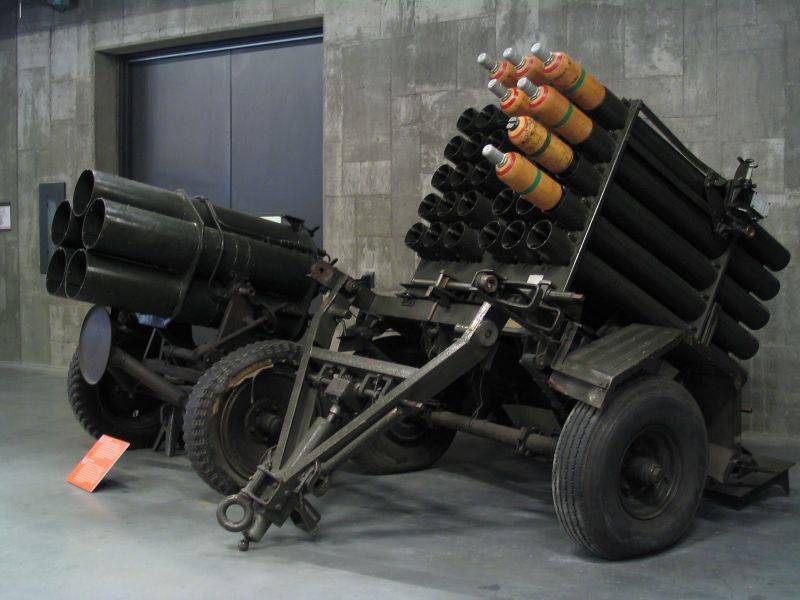
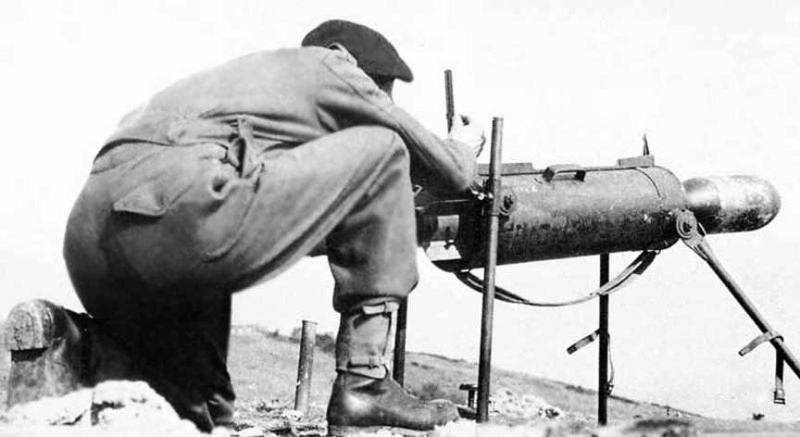
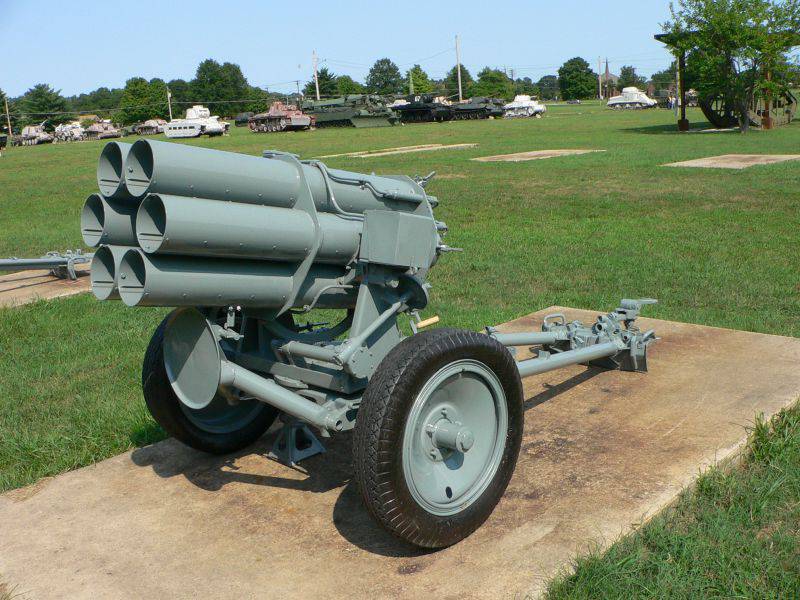
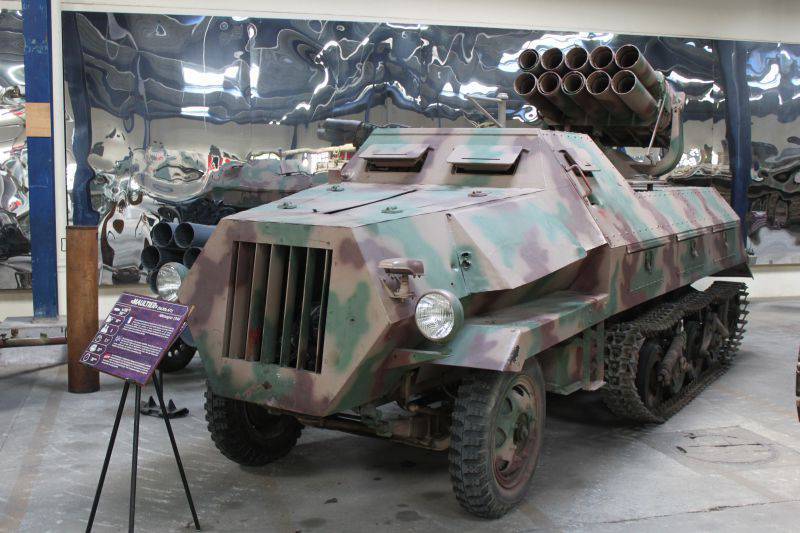
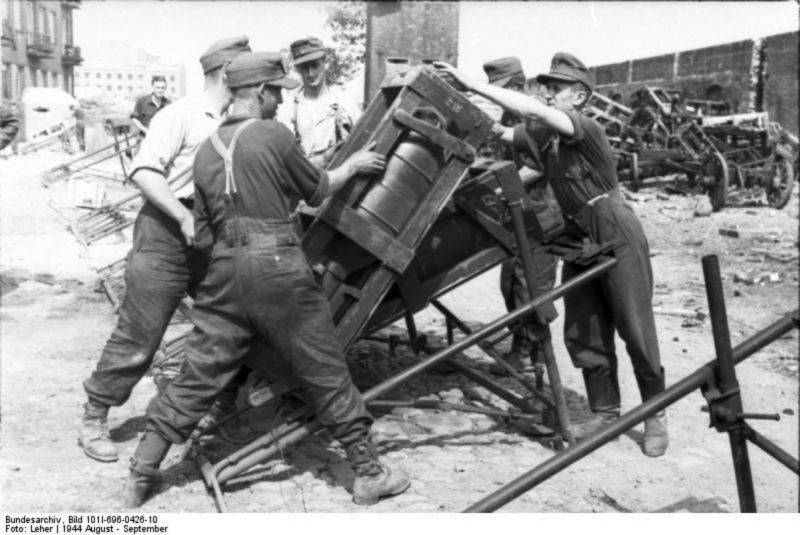
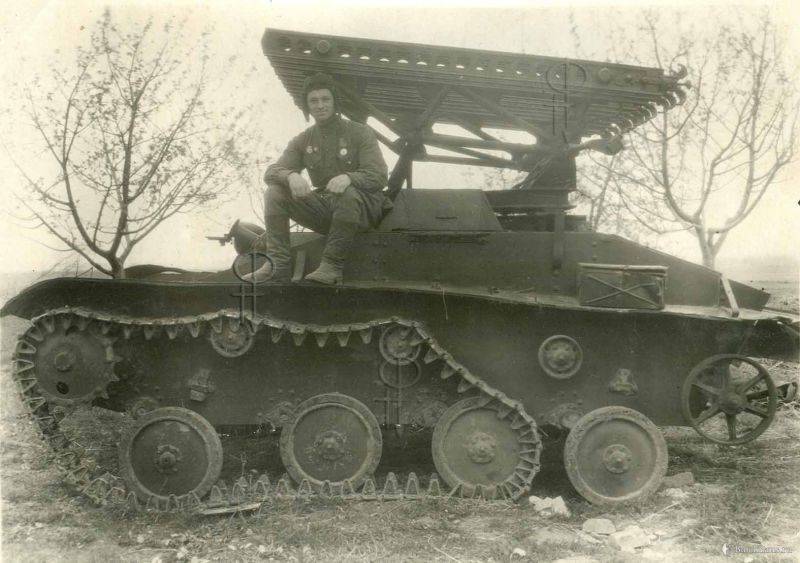
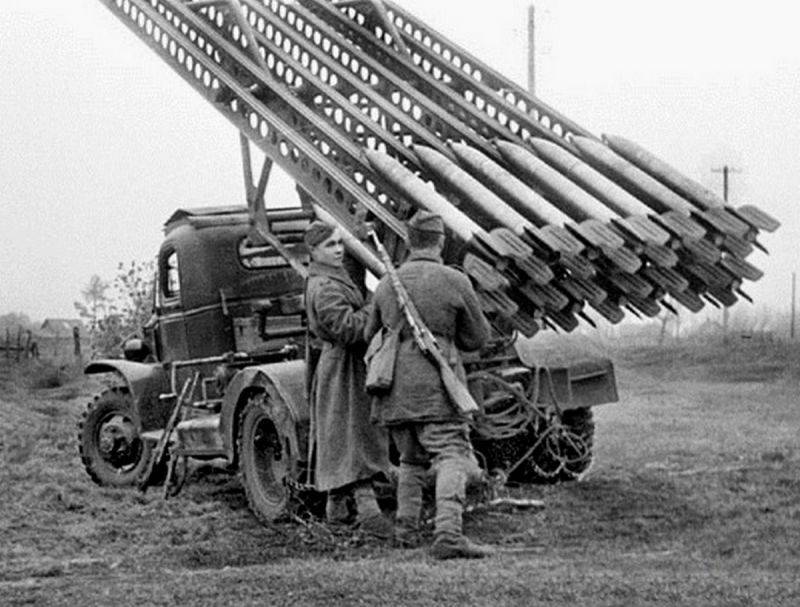
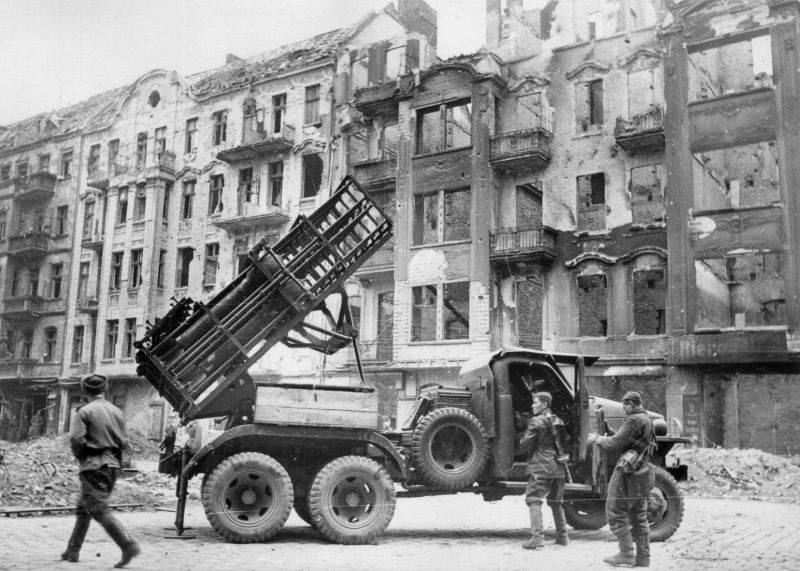
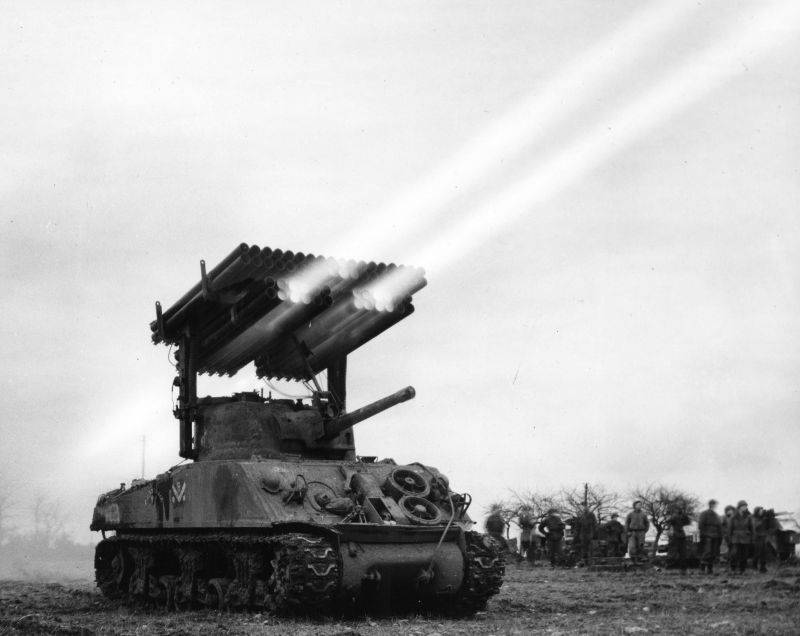
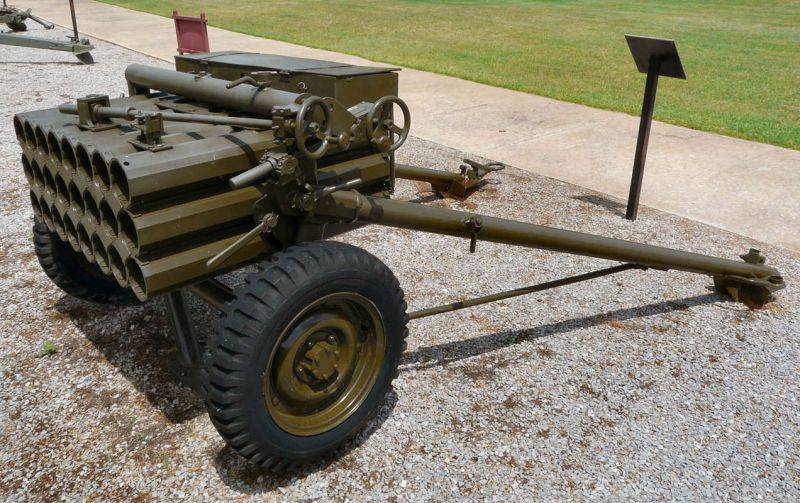
Information